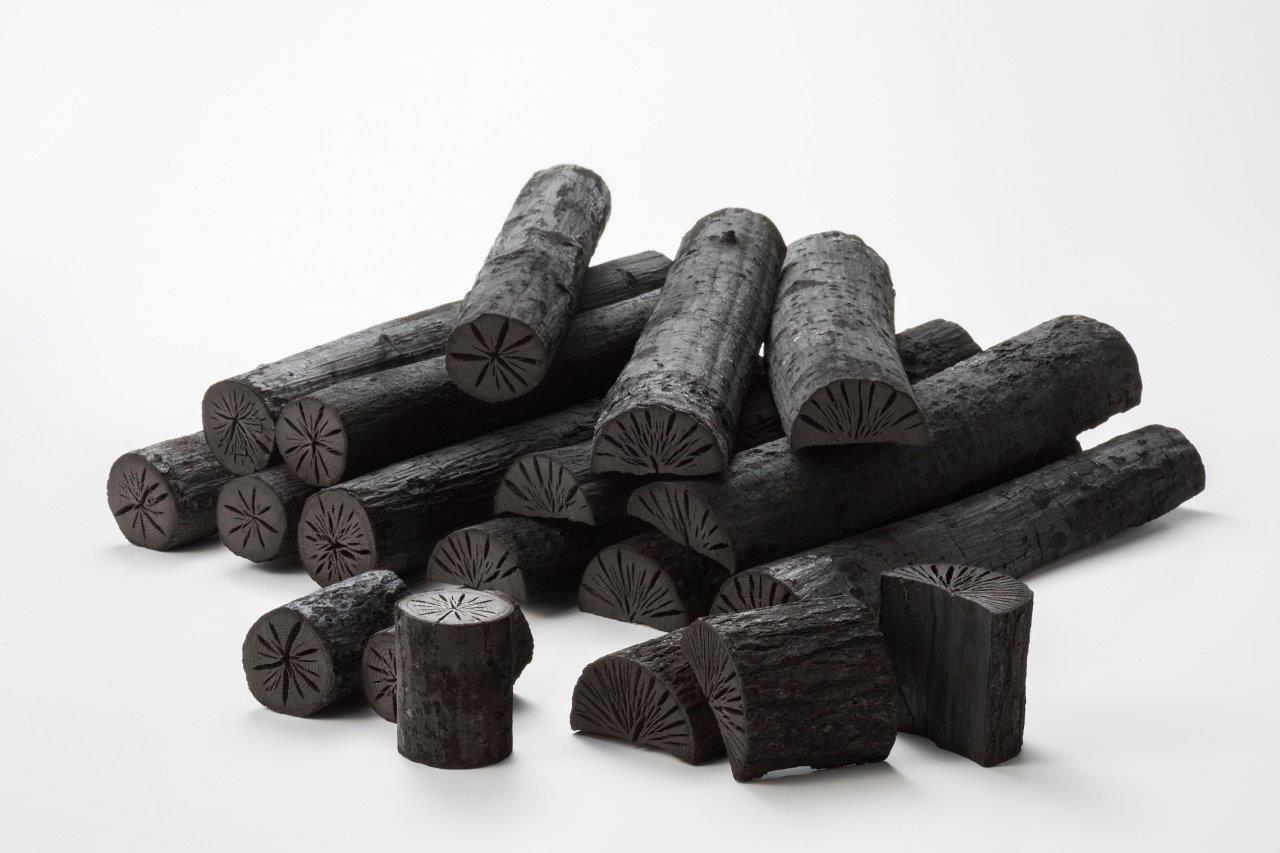Iwate Mokutan / Iwate Kirizumi / IWATE CHARCOAL
| Registration Number | 66 |
|---|---|
| Name of the GI | Iwate Mokutan,Iwate Kirizumi, IWATE CHARCOAL |
| Class | Others |
| Date of Protection | 2018/08/06 |
| Producing Area | Iwate Prefecture |
| Applicant - Name and Address | Corporation Iwate Prefecture Charcoal Society |
| Brand-site |
Producing Area
Iwate Charcoal is a soft charcoal made from raw wood grown in Iwate Prefecture.
The charcoal is characteristically hard and long-burning with a high carbon content, which minimizes smoke, flame and odor when burned, leaving little ash.
Uniformly carbonized with minimal cracks, Iwate Charcoal is highly valued for its quality across the country and has received the Minister of Agriculture, Forestry and Fisheries Award and the Forestry Agency Director General Award at the Agriculture, Forestry and Fisheries Festival every year since 2006.
Iwate Charcoal is produced from Japanese oak or sawtooth oak grown in Iwate Prefecture, by kilning (1) the raw wood slowly in Iwate Gama and Iwate Tairyo Gama kilns that have been uniquely developed in Iwate Prefecture. The finished charcoal pieces are inspected so that those classified as Grades 0 through 8 in terms of the refining degree (2) are selected and shipped out as Iwate Charcoal.
In Iwate Prefecture, where Iwate Charcoal is produced, forests cover 77% of the total land surface, far exceeding the national average of 67%.
The area has an abundance of broad leaf trees such as Japanese oak that can be used as raw wood material for charcoal, and has a long history of prosperous charcoal production.
In the early Meiji era (3), charcoal from Iwate Prefecture was in demand mainly for industrial uses in the Tohoku region, which is the northeast part of Honshu, the most island of Japan, and a large steel producer (4). Subsequently in the late Meiji era, producers increased shipment of charcoal to Tokyo as normal fuel. In 1912, the area was established as the largest producing area of charcoal in Japan.
In the 1950s, the Iwate Prefecture Charcoal Society led the development of unique kilns, Iwate Gama and Iwate Tairyo Gama, which made it possible to produce charcoal of high and stable quality and reduced the burden on kilning operation.
In the area, producers are encouraged to adopt these kilns through workshops and technical assistance for building kilns, along with efforts to train young producers.
The annual production was at 3,317 tons in 2016, which accounts for 31% of national production.
- Kilning: The process of making charcoal by burning unseasoned wood in the absence of air.
- Refining degree: An indicator of the degree of carbonization, expressed in terms of electrical resistance of charcoal surface using 10 grades from Grade 0 through 9. Since charcoal tends to be less refined at the bottom, such a part is cut off to meet the standards for shipment.
- Meiji era: An era of Japanese history extending from 1868 to 1912, during which Japan shifted from feudalism under the Shogunate to a modernized nation state.
- Steel production in the Tohoku region: In 1858, a blast furnace was built in Kamaishi City, Iwate Prefecture, which is a pioneer in Japanese modern steel production. The furnace was in operation until 1880. Charcoal was used as fuel in steel production at that time, but was subsequently replaced by coke, due to reasons such as charcoal being less economically viable.


